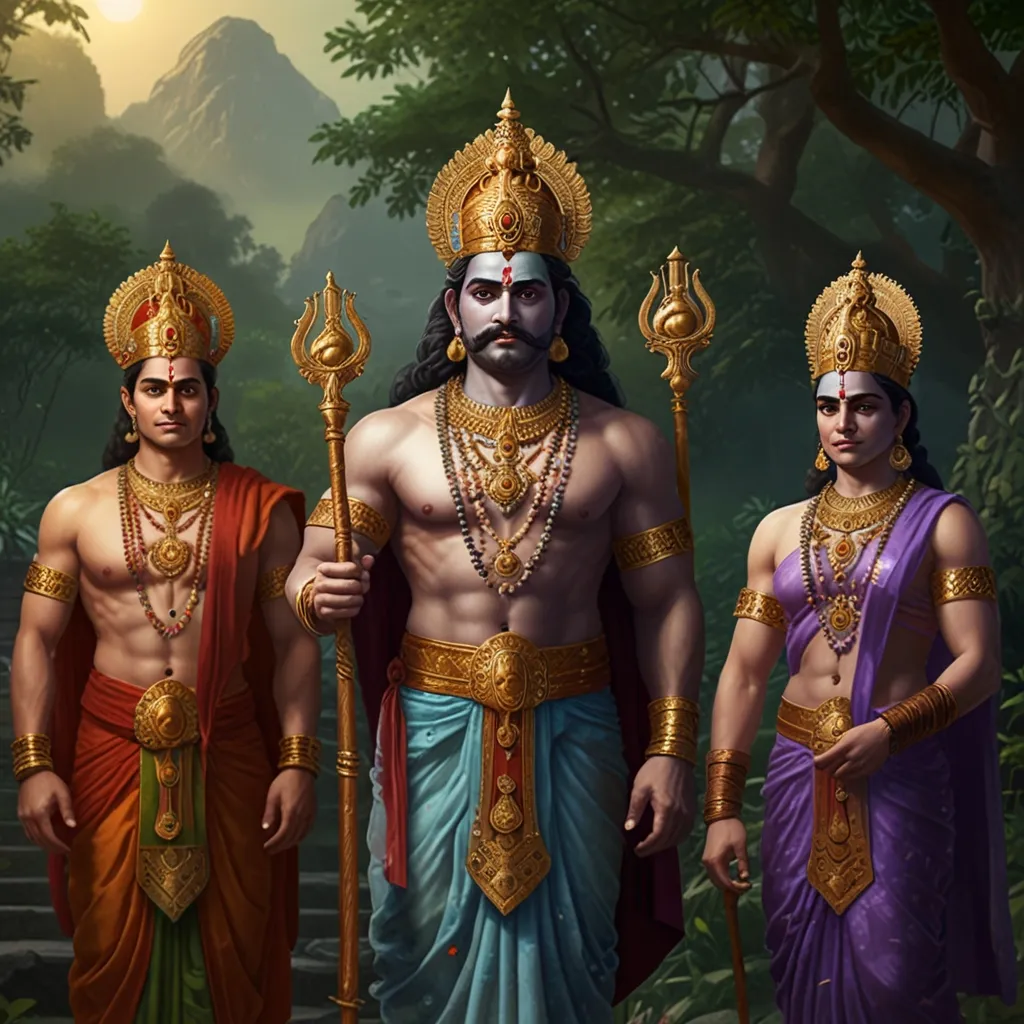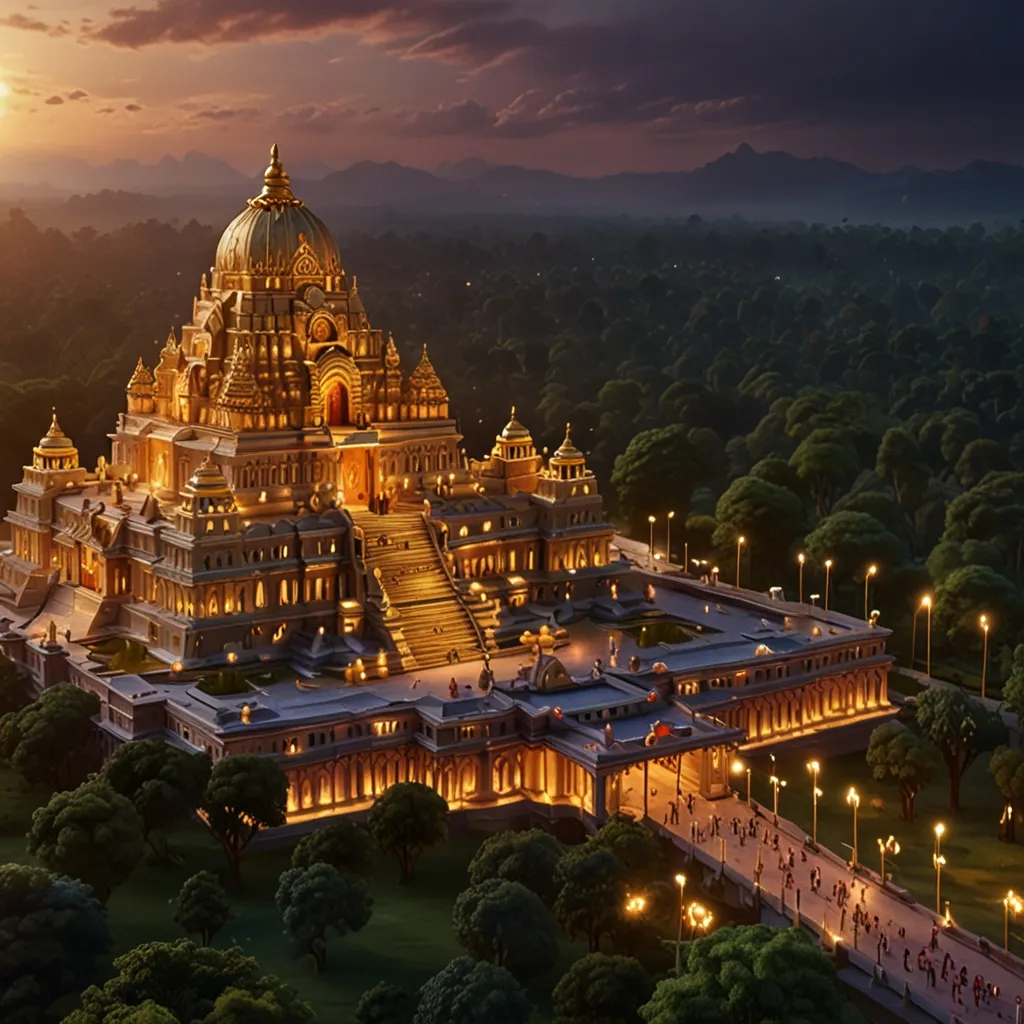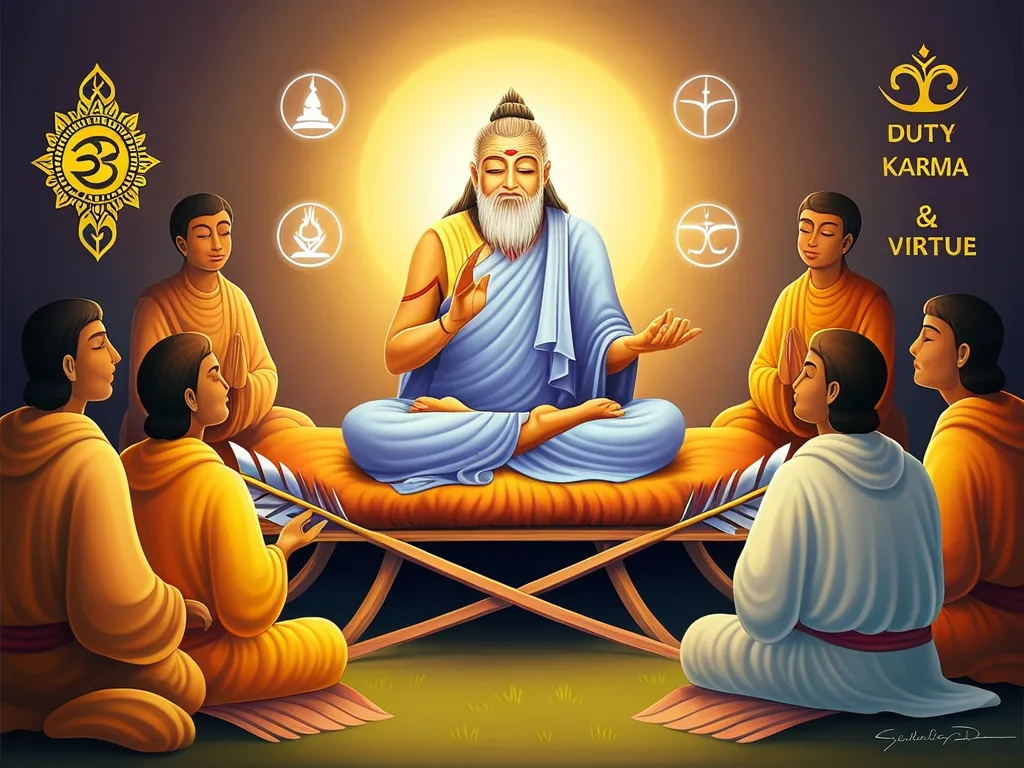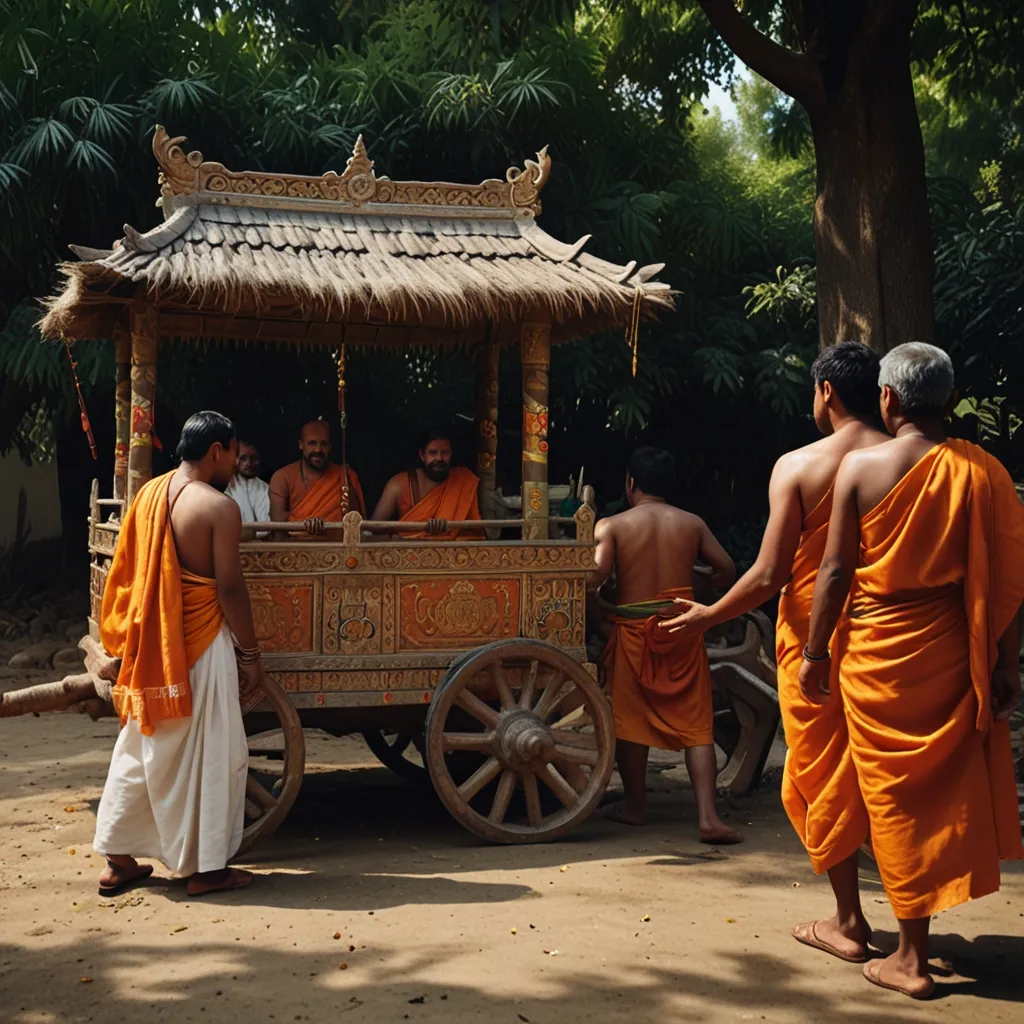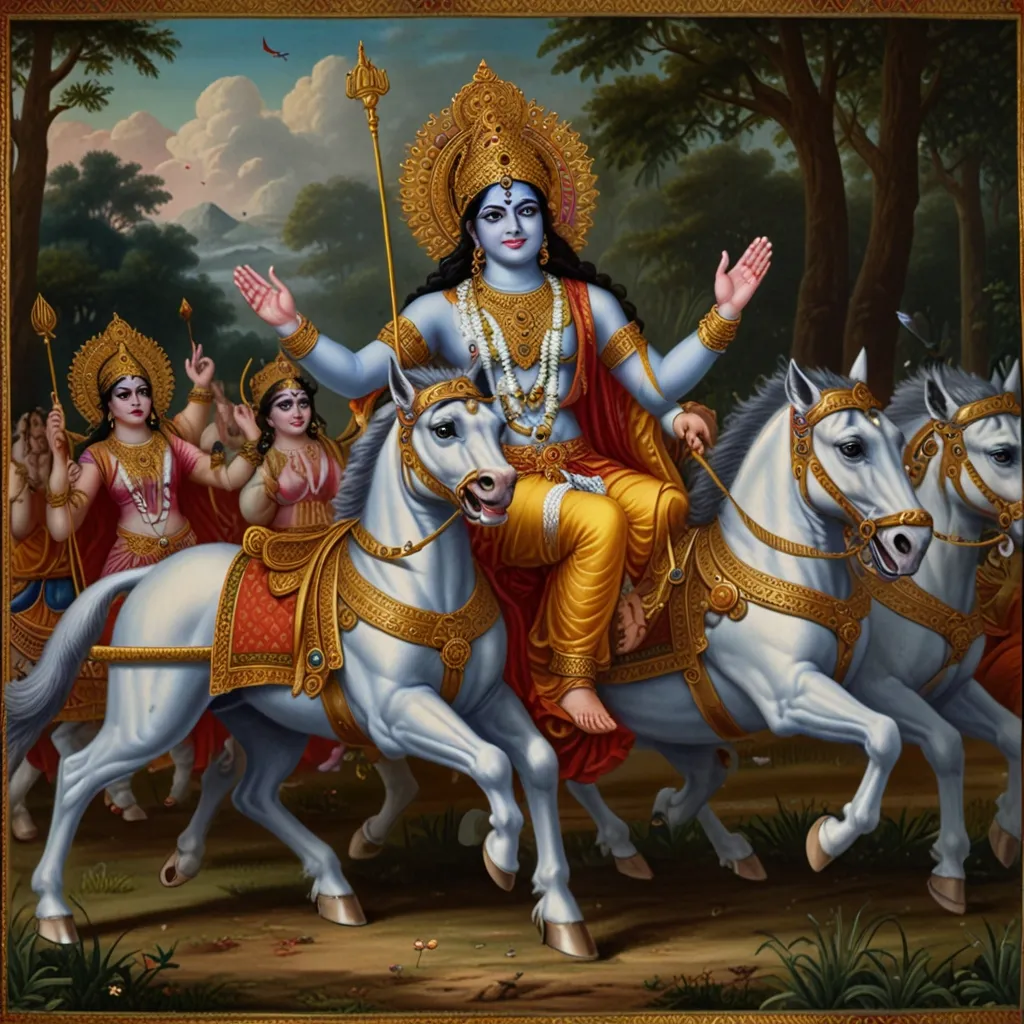In the ancient kingdom of Hastinapur, a whirlwind of drama and destiny swirled, carrying with it the stories that would carve out history. Picture this: a kingdom with sprawling palaces, lush gardens, and a captivating mix of characters whose lives were intertwined by fate.
At the center of our tale is Satyavati, a woman of remarkable strength and cunning. Imagine starting life as the daughter of a fisherman chieftain, not knowing that destiny had extravagant plans. She caught the eye of King Shantanu, who was completely taken by her beauty. Of course, royal love stories are never straightforward. Shantanu’s condition for marrying her was that her children would take the throne. This was a major curveball since Shantanu already had an older son, Bhishma, from a previous marriage.
Now, Bhishma wasn’t your average royal. His sense of duty was unwavering. He agreed to give up his claim to the throne and also took a vow of celibacy, ensuring that there would be no competition for Satyavati’s future children regarding succession. Imagine that kind of dedication!
Satyavati and Shantanu had two sons, Chitrangada and Vichitravirya. But the universe had other plans. Chitrangada was killed by a celestial musician, a Gandharva. Vichitravirya, on the other hand, died young and childless. The future of the Kuru dynasty was on the edge of a knife.
In desperation, Satyavati turned to her other son, Vyasa, for help. Vyasa was no ordinary man. Born out of wedlock to Satyavati and the sage Parashara, his birth itself was a miracle, happening in the middle of the Yamuna River. Vyasa grew up wise, diving deep into the Vedas, and gaining immense respect and the name Krishna Dwaipayana.
Satyavati asked Vyasa to perform Niyoga, an ancient custom where a widow could conceive a child with a man other than her deceased husband to continue the lineage. Vyasa, though wise and willing, faced hurdles. When he performed Niyoga with Ambika, the widow was so terrified by his appearance that she closed her eyes during the ritual, resulting in the birth of Dhritarashtra who was blind yet strong. The second widow, Ambalika, turned pale during the ritual and hence her son Pandu was born with a pale complexion.
Adding spice to this already colorful tale, Ambika sent her maidservant the third time around without Vyasa’s knowledge. The maid didn’t react in fear, and thus Vidura was born. Blessed by the gods, Vidura was no less than an incarnation of Yamaraja, the lord of death.
Dhritarashtra, Pandu, and Vidura grew up together within the majestic walls of Hastinapur’s palace. Despite their different circumstances of birth, they were raised as Bhishma’s own. They were schooled in the Vedas, athletic sports, and the science of morality. Each excelled in their own way: Dhritarashtra in strength, Pandu in archery, and Vidura in virtue and wisdom.
Destiny rolled the dice, and due to Dhritarashtra’s blindness, Pandu became the king of Hastinapur. Vidura, being born to a maidservant, was passed over for kingship. But Pandu’s rule was strong; he expanded the kingdom and looked after the prosperity of his people.
Vidura, with his profound wisdom, became the kingdom’s prime minister. He was the voice of reason, the cornerstone of justice, offering counsel to both Dhritarashtra and Pandu. His children carried on his legacies, full of virtue and accomplishment, like chips off the old block.
The intertwined stories of Dhritarashtra, Pandu, and Vidura reveal a complex tapestry of human nature and the ironies of fate. Their lives, shaped by the choices of their forebears and the circumstances of their births, led each one down a distinct path. Yet, each left a legacy that echoed through the ages.
What can be taken from this epic drama is the delicate balance between destiny and duty. Each character faced challenges with a unique blend of emotions, decisions, and their inherent moralities. We, too, navigate our lives within a network of relationships and unexpected turn of events, drawing continuous parallelisms from these age-old tales.
The intricate web of Hastinapur’s royal lineage is more than just a story; it’s a reflection of the grand cosmic design where every choice, vow, and sacrifice counts. It’s a reminder that strength isn’t just in the sword’s might but often resides in wisdom, sacrifice, and the resolute fulfillment of duty.
Whenever we feel caught up in the vortex of our own lives, it might help to remember this story of Satyavati, Bhishma, Vyasa, and their offspring. Sometimes, the grand narrative of our lives is being written in ways we can’t fathom. So, whether we are steering through stormy seas or basking under sunny skies, every twist and turn holds its place in the bigger picture.
As we carry forward, it’s crucial to channel our inner Bhishma’s duty, Vyasa’s wisdom, and Vidura’s justice. After all, like the legendary characters of Hastinapur, we too are crafting our tales, choice by choice, day by day.
